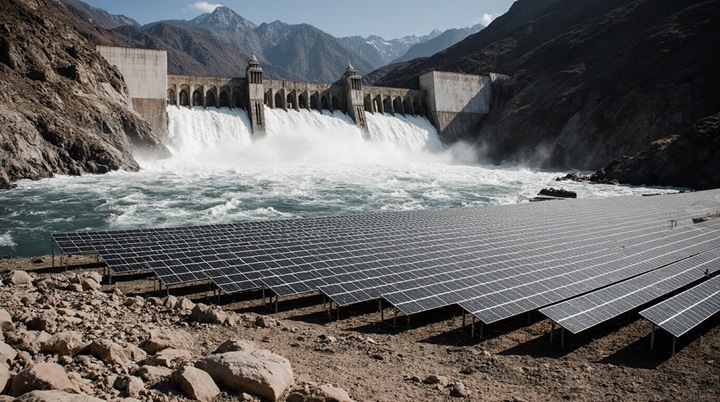Tajikistan: betting on Dams to the detriment of the sun and wind
Tajikistan, a country with colossal hydropower resources, is making a decisive bet on “big water”, directing the main efforts and international investments to the development of hydroelectric power plants (Dams). However, as follows from the data of the new global report “Tracking SDG 7: Energy Progress Report 2025”, prepared by leading global organizations, including the World Bank and the International Energy Agency, such a strategy may lead to the loss of equally significant opportunities in the field of solar and wind energy. While the world is experiencing a boom in the development of photovoltaics and wind generation, Tajikistan risks staying away from these key trends, which creates potential risks for its energy security and sustainable development in the long term.

The report highlights a global trend: renewable energy sources are rapidly increasing their share in the global energy mix, with solar and wind power plants becoming the main driving force behind this growth in 2023. Investments in solar energy reached a record $9.44 billion, accounting for 44% of the total financing of clean energy in developing countries. This is the highest figure in the entire history of observations. Against this background, Tajikistan’s strategy, focused almost exclusively on Dams, looks like a bold but risky step. On the one hand, the country is striving to become a regional hydropower giant by exporting surplus electricity to its neighbors. International financial flows confirm this course: the report mentions the financing of new hydropower projects in Tajikistan, in particular, by Saudi Arabia.
On the other hand, experts are increasingly talking about the dangers of an “energy monoculture.” Excessive dependence on Dams makes the country’s energy system vulnerable to climate change, which can lead to low-water rivers and reduced electricity generation. Seasonal fluctuations in runoff also create problems, leading to a shortage of energy in winter, when consumption increases and Dam output falls. Diversification of the energy portfolio through the use of solar and wind energy could significantly increase the sustainability and reliability of energy supply. Tajikistan, where there are about 300 sunny days a year, has a huge, but practically untapped potential for the development of solar energy.
According to the report, in order to achieve the Sustainable Development Goals (SDGs) in the field of energy, a fundamental shift in energy production, distribution and consumption is required, supported by significant investments and thoughtful policies. The document notes that the installed capacity of renewable energy sources in the world reached a record 478 watts per capita in 2023. However, this progress is extremely uneven. For example, in sub-Saharan Africa, this figure is only 40 watts per capita, which allows only basic needs to be met. Tajikistan, relying on giant, capital-intensive and long-term Dam projects, is missing the opportunity to quickly and less expensively deploy solar and wind installations that could accelerate the electrification of remote areas and create new jobs.
Recall that at the end of last year, the international ecological coalition “Rivers without Borders” in its report also pointed to the powerful untapped potential of solar and wind energy for Tajikistan. Based on calculations of different scenarios, environmentalists came to the conclusion that the combination of the development of large-scale solar generation in Tajikistan, coupled with the completion of the Rogun Dam of a smaller scale, could make it possible to fully cover the winter electricity deficit in the country by 2030 – 2031. In addition, the diversification of energy sources within the unified energy system of Tajikistan will also significantly reduce the risks to the energy sector and the economy, increasing its resistance to climate change.
The report “Tracking SDG 7” calls on governments and international partners to step up efforts to introduce all types of clean energy so that no one is left behind. Global trends clearly show that the future of energy lies in a balanced combination of various renewable sources. For Tajikistan, this means that ignoring solar and wind energy may turn out to be a strategic miscalculation that will slow down the achievement of full energy independence and sustainable economic growth. Relying solely on water resources, albeit huge, in the XXI century looks like a bet on the past in a world that already lives on the energy of the future.
Thus, Dushanbe faces a serious dilemma: to continue investing all resources in ambitious hydro projects, hoping for their payback in the long term, or to adjust the course and begin to actively develop the richest resources of the sun and wind, following global trends and ensuring a more balanced and sustainable energy future for its citizens. As the report shows, the second way today looks more reliable and promising for achieving universal access to inexpensive, reliable and modern energy.
Alexander Eskendirov (Rivers.Help!)
Original (in Russian): Таджикистан: ставка на ГЭС в ущерб солнцу и ветру


